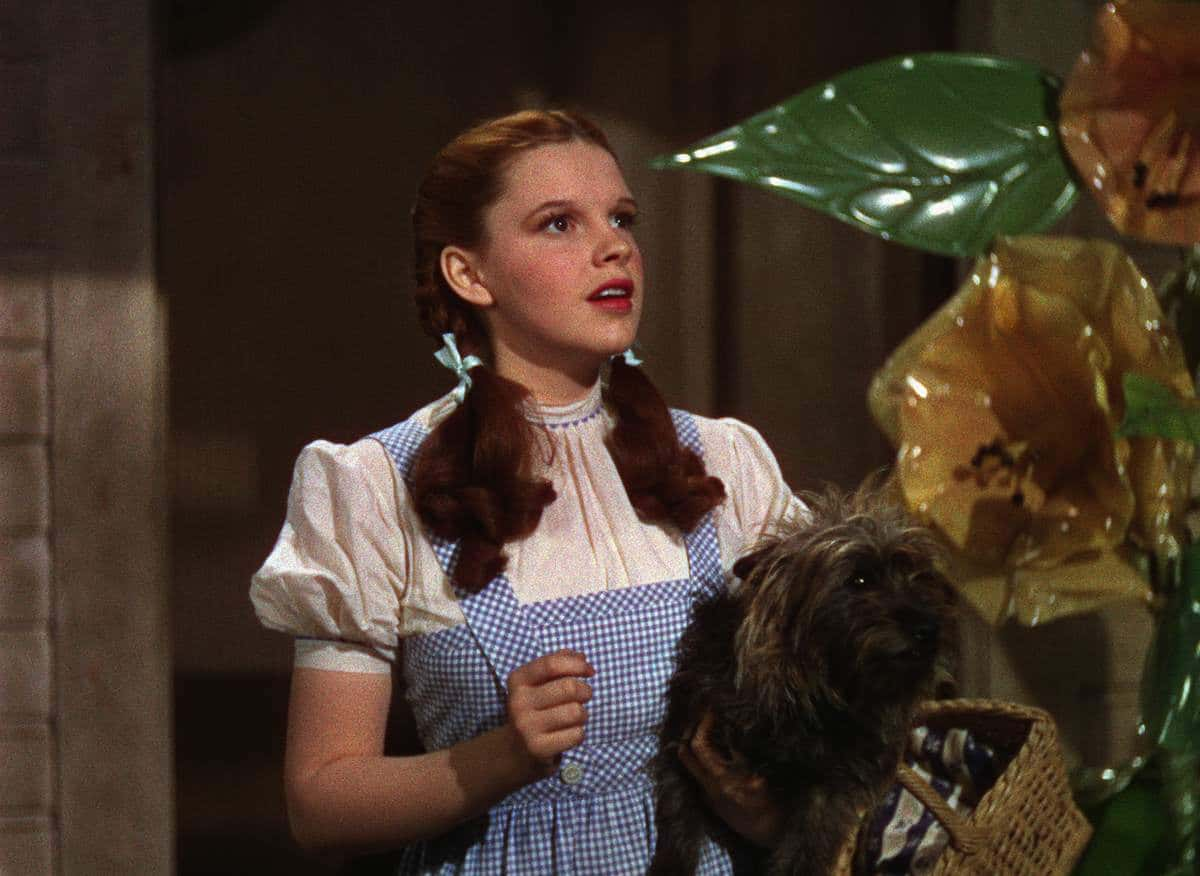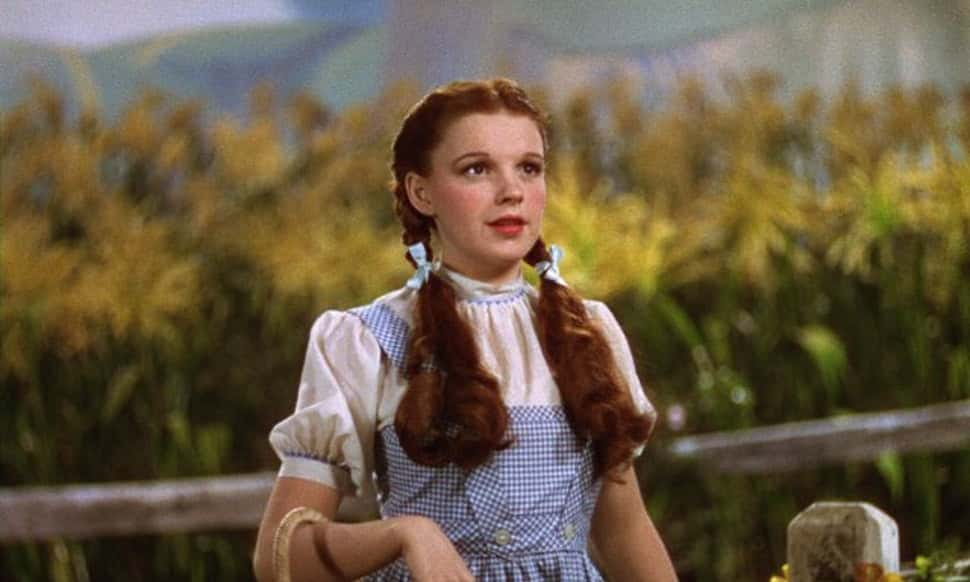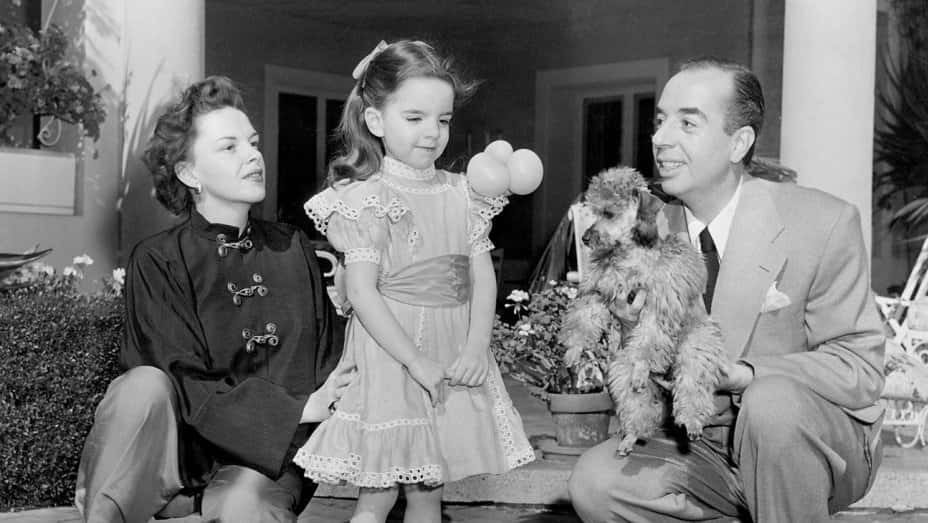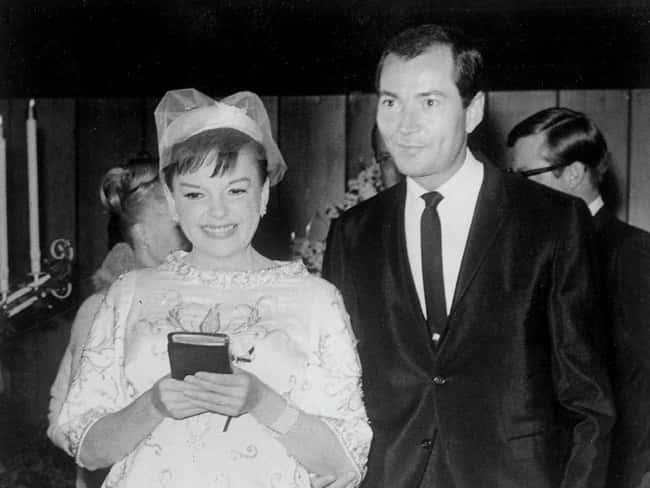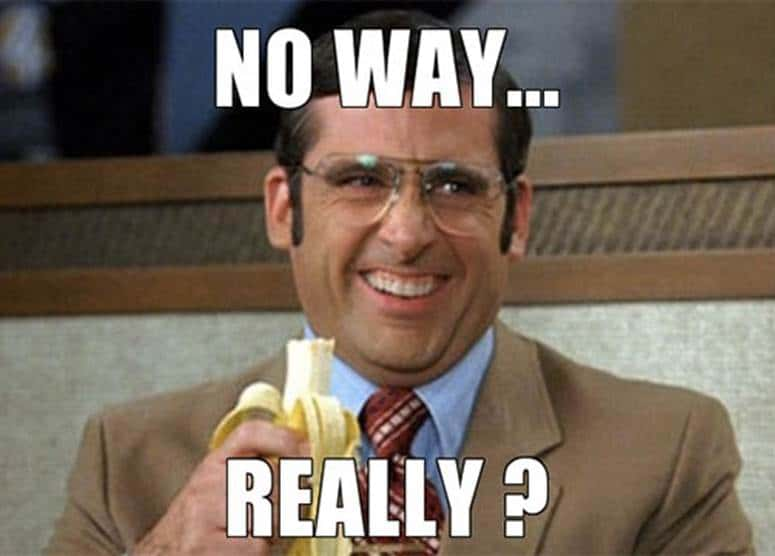“I've always taken The Wizard of Oz very seriously, you know. I believe in the idea of the rainbow. And I've spent my entire life trying to get over it. ” —Judy Garland
Dorothy Gale, heroine of The Wizard of Oz, is one of the most recognizable characters in film, with her blue and white gingham, ruby red slippers, and her braided pigtails.
But for Judy Garland, Dorothy was just the beginning of a decades-long career that touched the hearts of millions. Throughout her musical success in Hollywood and Broadway, and through her very public battle with addiction, Garland’s successive setbacks and comebacks—and her enduring strength of spirit—have inspired fans for almost 50 years after her tragic death in 1969.
As a tribute to Judy Garland, movie star, icon, and entertainer extraordinaire, here are 42 Over-The-Rainbow Facts about Judy Garland.
42. Stage Name
The actress we know as Judy Garland was born Frances Ethel Gumm on June 10th, 1922, to Francis and Ethel Gumm of Grand Rapids, Minnesota.
41. Child Star
Garland’s parents were vaudevillians themselves who settled in Grand Rapids to run a movie theater that often featured vaudeville acts. Garland got her start in showbiz at only two and a half years of age—alongside her sisters, she performed “Jingle Bells” at a Christmas show at her parents’ theater.
40. Westward Bound
The Gumm family moved to Lancaster, California in 1926, where Garland’s mother quickly tried to get her talented daughters into the motion picture business, then only a fledgling medium.
39. Alumni Association
In California, Garland attended the famed Hollywood High School, along with her future co-star Mickey Rooney. Other famous alumni of Hollywood High include John Huston, Carole Lombard, and Lana Turner, who attended before Judy. The school has since seen students including John Ritter, Laurence Fishburne, Sarah Jessica Parker, and Leighton Meester pass through its halls.
 Places To Go, Buildings To See
Places To Go, Buildings To See
38. The Gumm Sisters
Judy, along with her elder sisters, Mary Jane "Suzy/Suzanne" Gumm and Dorothy Virginia "Jimmie" Gumm, formed a vaudeville trio known as “The Gumm Sisters,” in which Judy was known as “Baby Gumm.” The trio’s name was met with some mockery, and a playbill reportedly once accidentally called them “The Glum Sisters,” so they all changed their last name to Garland, and Frances adopted the stage name Judy Garland. The Garland Sisters broke up after Suzy married.
37. Unhappy Home
Garland’s childhood was an unhappy one, in part due to her parents’ unstable marriage. She later said, "As I recall, my parents were separating and getting back together all the time. It was very hard for me to understand those things and, of course, I remember clearly the fear I had of those separations.” Her parents’ rocky marriage may have been the foundation for her own marital relationships later in life.
36. The Original Momager
Garland resented her mother’s ambition for her daughters’ careers. She characterized her mother as, "the real Wicked Witch of the West.”
35. Pill Pusher
Garland also alleged that her mother began providing pills to her (some to pep her up, others to help her sleep) when Garland was just 10 years old.
34. Discovered!
A 1935 performance by The Garland Sisters would change Judy’s life forever when MGM Studios “discovered” young Judy. MGM promptly signed her to a contract, but her career got off to a rocky start. At 13 years old, she was considered too old to be a traditional “child star,” yet was too young to play adult roles.

History's most fascinating stories and darkest secrets, delivered to your inbox daily.
33. High Expectations
As a teenage actress, Judy endured ruthless criticism of her appearance. She was often dressed plainly and was sent for auditions for homely “girl-next-door” roles, all while attending school with silver screen beauties like Elizabeth Taylor and Ava Gardner.
Charles Walters, who directed Garland in several films, said, "Judy was the big money-maker at the time, a big success, but she was the ugly duckling...I think it had a very damaging effect on her emotionally for a long time. I think it lasted forever, really.”
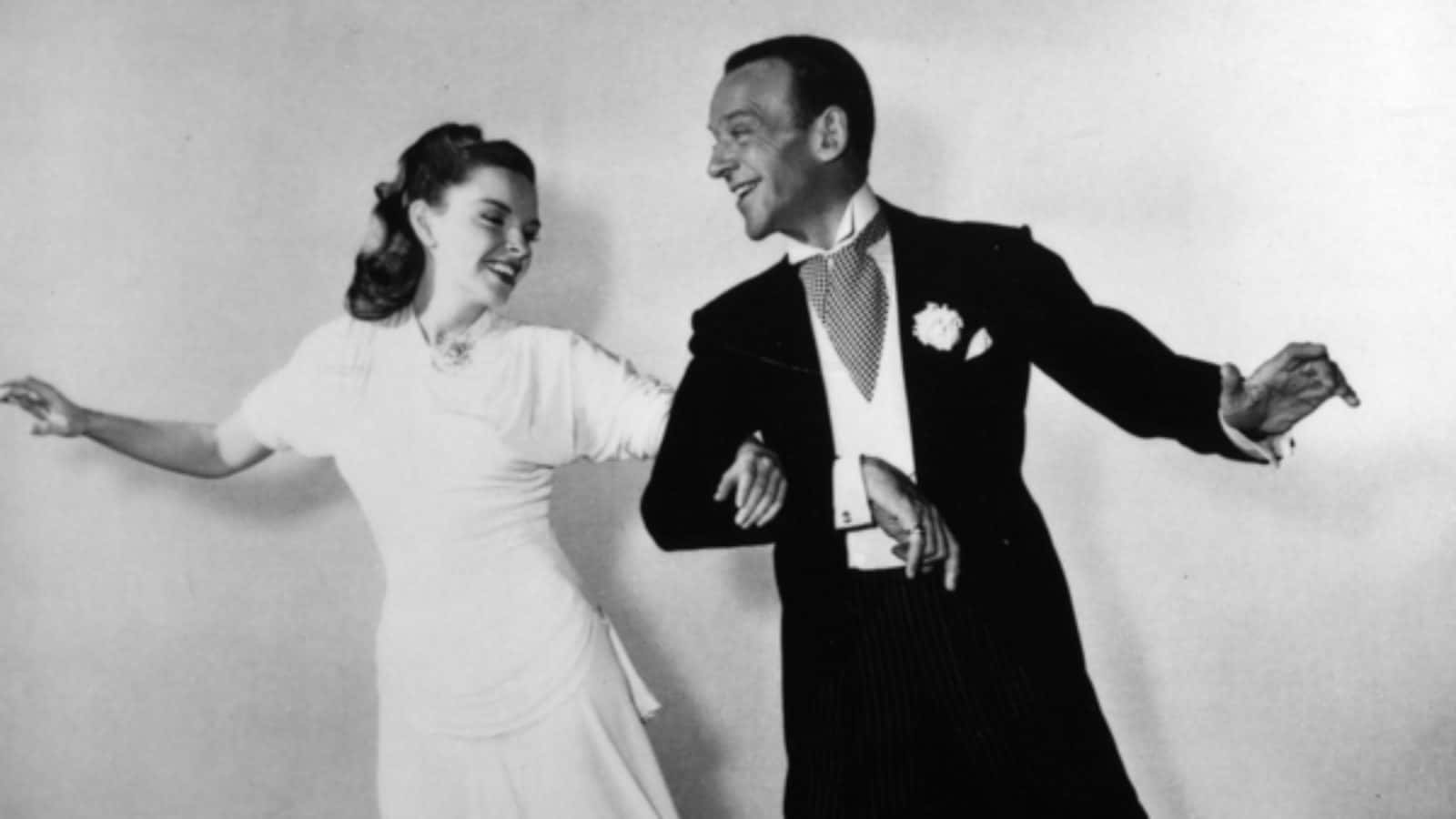 Film Society of Lincoln Center
Film Society of Lincoln Center
32. The Price of Beauty
Young Judy went to great lengths to improve her appearance at the studio’s insistence. Despite dressing her in frumpy or frilly dresses to fit the “girl next door” image they were peddling, Garland was made to wear caps on her teeth and special prosthetics for her nose.
31. Cruel Criticism
Louis B. Mayer, the head of MGM, even called the teenage Garland “my little hunchback,” mocking the curvature of her spine and her short stature: even as an adult, she stood only 4’11”.
30. Big Break
Despite being signed to MGM, a film studio, Garland mainly performed in live shows and on the radio at the beginning. At a birthday party for megastar Clark Gable, Garland performed the Al Jolson hit song, “You Made Me Love You.” Her performance was such a hit, she was asked to repeat it in the MGM musical film Broadway Melody of 1938, where she sang the song to a photo of Gable.
29. Dynamic Duo
At MGM, Garland was often paired with child actor Mickey Rooney in a series of “backyard musicals.” After several supporting roles, they first co-starred in Babes in Arms, and appeared in other films together, many of them in the Hardy Family series of movies in which Rooney played Andy Hardy and Garland played the literal girl-next-door.
 Slate Magazine
Slate Magazine
28. Body Shaming
Even as a teenage movie star, Garland’s weight was a constant concern to the movie studio. She was forced on diets of nothing but chicken soup and cottage cheese, and was once served soup and plain lettuce when she ordered a regular meal. This was despite the fact that her weight was well within a healthy range for her age and height.
27. Dangerous Habits
Garland alleged that she was often prescribed amphetamines by the studio to energize her enough to keep up with the frantic pace of filming one movie after another. To help her sleep, she was prescribed barbiturates. This regular regime of dangerous and addictive drugs, she said, led to her lifelong battle with addiction.
26. Over the Rainbow
Garland played her most famous role in 1939, as Dorothy Gale in The Wizard Of Oz. Nominated for six Academy Awards, the film won just two: for Best Original Score and Best Original Song (“Over The Rainbow,” sung by Garland). That year she also received an honorary Academy Juvenile Award for her performances in both Babes in Arms and The Wizard of Oz. It would be her only Oscar ever.
25. What Could Have Been
Garland’s iconic role in The Wizard of Oz could have been a little different—she was originally slated to wear a blonde wig, though this idea was scrapped shortly before filming. In fact, the role was first offered to fellow child stars Shirley Temple and Deanna Durbin, but both were unavailable.
24. Grim Truths
Garland’s growing stardom didn’t mean a lessening of criticism over her weight from MGM. Dorothy Gale’s iconic blue-and-white gingham dress was designed because the pattern had a “blurring effect” on her body, making her appear younger and slimmer. After the film’s release, she was sent on a cross-country five-show-a-day tour of appearances for Babes in Arms with Mickey Rooney, during which time she was forced on a strict diet.
23. All Grown up
1940 saw Garland star in her first adult roles. In her third film of that year, Little Nellie Kelly, she played both a mother and daughter. The role had her doing an accent, and she had her first real kiss scene and the only death scene she ever did. The kiss was with costar George Murphy. Murphy, who was 20 years Garland’s senior, later described the kiss as embarrassing, and that it made him feel like”a hillbilly with a child bride."
22. First Love
In the late 1930s, Garland fell in love with bandleader Artie Shaw, her first real adult romance, but was devastated when he ran off with fellow MGM leading lady Lana Turner in 1940.
21. Then Comes Marriage…
Garland began seeing musician David Rose, who presented a diamond engagement ring to her on her 18th birthday in 1938—though at the time Rose was still married to his wife, singer Martha Raye. The studio successfully drove Rose and Garland apart, though after a brief break Garland and Rose were wed in 1941. Garland was just 19 years old, and Rose was just the first of her five husbands.
20."A True Rarity"
Garland’s marriage to her first husband was deemed “a true rarity” by the media at the time of their wedding, though unfortunately, it turned out not to be much of a fairy tale. She quickly became pregnant, but was pressured into an abortion. The pair separated soon after and were divorced in 1944.
19. Office Romance
While it technically wasn’t an “office” romance, Garland met her next husband while on the job. She was cast in Meet Me in St. Louis, the second of her iconic musical roles. Director Vincente Minnelli allowed Garland to appear attractive and sexy, rather than her previous roles where she was portrayed as plain or childlike. Garland married Minnelli in 1945, despite rumors of his homosexuality. The couple, who had a 20 year age difference between them, had a daughter, Liza, born in 1946.
18. Crushing Blow
By 1948, Garland’s marriage to Vincente Minnelli was already strained, due to their age difference and her erratic behavior (likely due to her drug addiction). She reportedly returned home early to find Minnelli in the “loving embrace” of a male employee, a shock that drove her to attempt suicide by cutting her wrists. Minnelli stopped her in time to save her life.
17. Ups & Downs
Garland’s star continued to rise at MGM after she was cast opposite Fred Astaire in Easter Parade, but personally, her life was beginning to unravel. After being cast opposite Astaire once again, in The Barkleys of Broadway, she was taking not only barbiturates to help her sleep, but also illegal pills with morphine, and was quickly developing a dependence on alcohol. After missing several days of work due to her addiction, she was suspended by the studio and replaced in the film by Ginger Rogers.
16. Like Mother, Like Daughter
Garland’s suspension from MGM did her some good—she returned to work healthier and happier in 1948 for a role in In the Good Old Summertime. The film, a box office hit, was also the debut of Garland’s daughter Liza Minnelli, aged two and a half—the same age Garland had been when her showbiz career began over two decades earlier.
15. Career in Decline
After being cast in a third film co-starring Fred Astaire, Garland’s erratic behavior and absences from the film set lead to another suspension, and she was replaced by Jane Powell in Royal Wedding. After this, she may have again attempted suicide, scratching her neck with a bottle, though reports at the time sensationalized the event. In 1950, Garland left MGM for good after 15 years of making films with the studio.
 Pinterest
Pinterest
14. Return to Vaudeville
Garland’s career was far from over, and she embarked on a sold-out tour of Britain and Ireland, performing Al Jolson songs in the vaudeville tradition. She also began a romantic relationship with her tour manager, Sid Luft, whom she married. The pair had two children: Joey Luft, and Lorna Luft, who became an actress and singer herself.
13. Hollywood Comeback
Garland and Luft formed a film production company, Transcona Enterprises, and financed a remake of A Star Is Born, with Garland playing the starring role. The film was released to great acclaim and popularity, but due to filming delays (largely due to Garland’s own absences), the film still lost money. It would be the only film Transcona ever made with Warner Bros.
12. Still Got It
In 1955, Garland appeared in the first of many TV specials, including Ford Star Jubilee, which was the first full-color show on CBS. She also later performed for four weeks in Las Vegas, for a salary of $55,000 per week, making her the highest-paid entertainer on the Strip up until that point.
11. Golden Legend
A 1961 appearance by Garland at Carnegie Hall was called “the greatest night in show business history.” A two-album recording of the performance was released, titled Judy at Carnegie Hall, which got certified gold, charting for 95 weeks on Billboard—with 13 weeks at the top spot. The album also won four Grammy awards. It remains popular to this day.
10. Deadbeat Husband
Garland’s marriage to Sid Luft, her third husband, deteriorated after his drinking and gambling left Garland practically broke. The pair divorced in 1963, and she entered a period of financial instability that would last the rest of her life.
9. Unwritten
In 1960, Garland received $35,000 for a “tell-all” autobiography about her turbulent career and emotional life. However, she ended up abandoning the project.
8. Never Say Never
Garland kept up a grueling tour schedule in the years leading up to her death, despite being hospitalized in 1959 for hepatitis and being told she would never sing again. She recovered from the illness and performed a critically acclaimed performance at the Palladium in London.
 YouTube
YouTube
7. Hard-Working Woman
In 1965, The Supremes opened for her, and she performed a successful run of shows in London. Around this time, she could still command up to $50,000 per show—which she desperately needed after managers swindled significant sums from her.
6. Lucky Number Four
In 1965, she married her tour promoter, Mark Herron, on a freighter near Hong Kong. However, as she was not yet divorced from her third husband, she had to marry Herron officially several months later. The marriage only lasted six months.
5. Curtains
Garland married her fifth husband, nightclub manager Mickey Deans, on March 15, 1969. Sadly, this marriage was also only to last a few months: Deans discovered Garland dead of a barbiturate overdose on June 22nd, 1969. She was 47 years old.
4. A Legacy Living on
Even after her death, Garland has captivated hearts and imaginations. In 1992, Architectural Digest called her "probably the greatest American entertainer of the twentieth century." Turner Classic Movies dubbed Garland "history's most poignant voice.” A biopic titled Judy is currently slated for release, starring Renée Zellweger as Garland. The film centers on her performances in Britain in the late 1960s.
3. Stolen Oscar
In 1993, Judy’s third husband, Sid Luft, was caught trying to sell Garland’s honorary Oscar (won for Babes in Arms and The Wizard of Oz), as well as the replacement statuette she had requested when the first one reportedly vanished. Luft was made to pay $60,000 in damages.
2. Tragic Comparison
After her tragic death, Judy Garland was held up as a bellwether of behavior due to drug addiction and substance abuse among celebrities. Michael Jackson has been compared to her, and Marilyn Monroe exhibited many of the same behaviors later in her career. Sadly, the life of Garland’s daughter Liza Minnelli was similar to that of her mother, as she struggled with substance abuse through multiple marriages.
1. Forever Fabulous
Since the 1960s, Garland has been beloved as a gay icon, in part because of her talent, her endurance despite personal struggles, and because of her sheer camp value. When asked by a reporter what she thought of her gay following, Garland replied, “I couldn’t care less. I sing to people.”
















